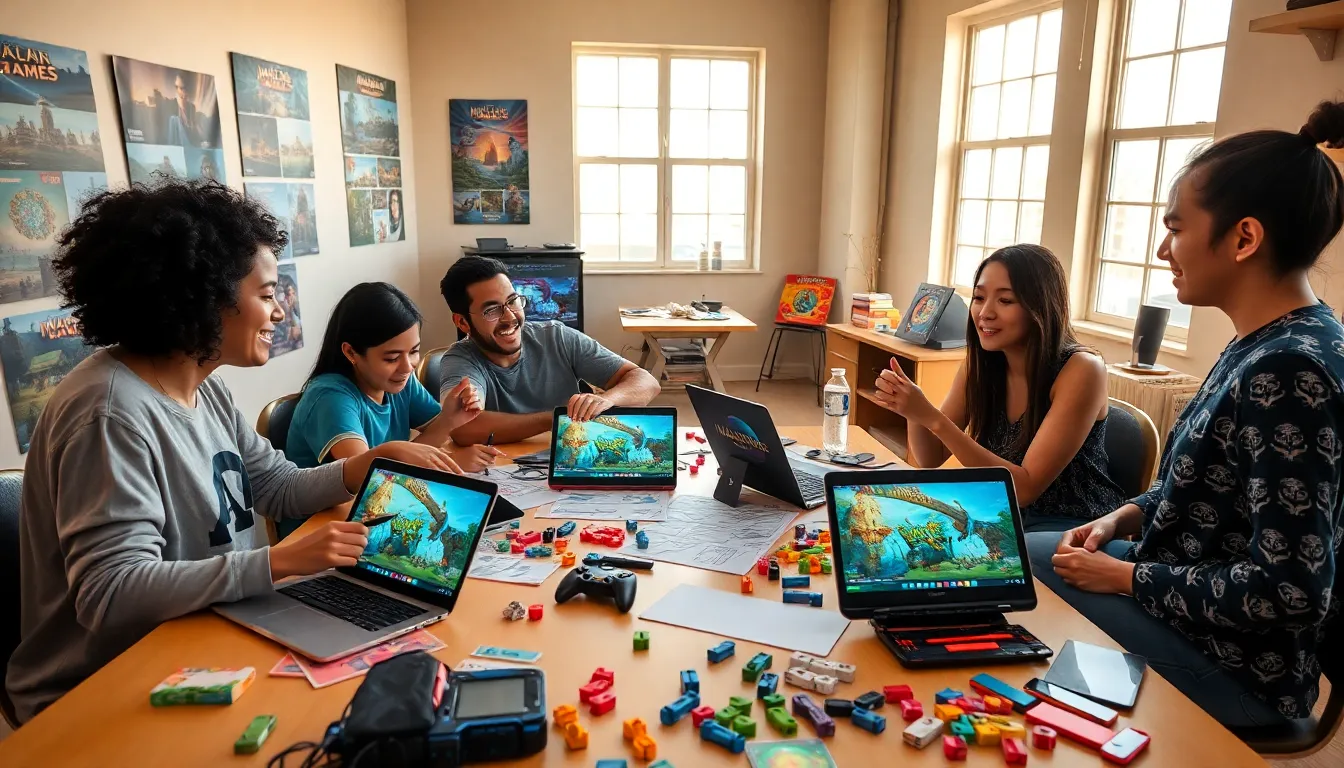Imagineer Games represents a dynamic sector of the gaming industry, designed to captivate and inspire players of all ages. Merging creativity with technology, these games offer immersive experiences that can transport players to worlds filled with adventure and challenge. This article delves into what Imagineer Games are, their key features, popular titles, and their projected future, offering a thorough understanding of this intriguing niche.
Table of Contents
ToggleWhat Are Imagineer Games?

Imagineer Games refer to a distinctive category within the gaming world that emphasizes creativity, innovation, and interactive engagement. These games are often characterized by their unique art styles, storytelling approaches, and the incorporation of user-generated content.
The Origins of Imagineer Games
The concept of Imagineer Games emerged as a response to the growing demand for interactive and personalized gaming experiences. Initially, these games drew inspiration from traditional gaming formats but sought to enhance player engagement through a more hands-on approach. Originating in the early 2000s, Imagineer Games gained traction through platforms that allowed users to share their creations and experiences with others, fostering a community-driven environment.
Different Types of Imagineer Games
Imagineer Games encompass a wide array of genres, including simulation, puzzle, and sandbox games. Popular types include:
- Simulation Games: These allow players to create and manage virtual environments, such as cities or farms.
- Puzzle Games: These challenge players’ critical thinking and problem-solving skills through engaging and creative tasks.
- Sandbox Games: Players are given the freedom to explore, build, and modify game elements in vast and open environments.
Each type presents a unique way for users to express their creativity while engaging with others.
Key Features and Mechanics
The effectiveness of Imagineer Games eventually hinges on their design and the experience they provide for players.
Game Design and Development Process
The development of Imagineer Games is typically iterative, focusing on user feedback throughout the process. Developers often conduct playtests to gauge engagement and enjoyment, allowing them to refine gameplay mechanics and visuals. Key aspects include:
- User-Centric Design: Ensuring that the game aligns with player expectations and enhances usability.
- Art and Animation: A compelling visual style that attracts players while maintaining clear navigational elements.
- Narrative Elements: Integrating storytelling components that resonate with players and enhance emotional investment in the gameplay.
User Experience and Engagement Strategies
Successful Imagineer Games prioritize user experience by implementing various strategies to enhance player interaction. These can include:
- Customizable Avatars or Characters: Allowing players to create unique representations of themselves.
- Social Features: Enabling players to connect with friends and share their creations or accomplishments online.
- Rewards Systems: Implementing in-game rewards that keep players motivated and engaged over time.
Popular Imagineer Games and Their Impact
Several Imagineer Games have achieved significant popularity, demonstrating the potential impact these games can have on the gaming landscape.
Case Studies of Successful Games
Titles like “Minecraft” and “Roblox” epitomize the essence of Imagineer Games, combining creativity with community engagement.
- Minecraft: Launched in 2011, this sandbox game allows players to build and explore virtual worlds, encouraging creativity and collaboration.
- Roblox: This platform enables users to create their own games while interacting with an extensive community, promoting user-generated content and innovation.
Both games have not only captured the attention of millions but have also fostered a culture of creativity and learning.
Community Feedback and Reception
Community reception is pivotal in determining the success of Imagineer Games. Positive feedback is typically associated with engaging gameplay, intuitive design, and a supportive community. Forums and social media platforms often buzz with discussions around updates, user-generated content, and collaborations, highlighting the communal nature of these games.
The Future of Imagineer Games
As technology continues to evolve, the landscape of Imagineer Games is poised for significant advancements.
Trends in Game Development
Several trends are influencing the future of Imagineer Games:
- Increased Use of AI: Developers are incorporating AI to create more adaptive gameplay experiences.
- Virtual and Augmented Reality: These technologies are redefining immersion, offering players new ways to interact with game environments.
- Cross-Platform Play: Enabling players to enjoy games across various devices, so removing barriers and enhancing accessibility.
Innovations on the Horizon
Looking ahead, innovations such as more interactive storytelling methods and advanced user-generated content tools are anticipated. These will empower players to express their creativity in unprecedented ways, leading to a richer, more engaging gaming experience.
Conclusion
Imagineer Games represent a vibrant intersection of creativity, technology, and community in the gaming world. Their evolution reflects not only advancements in technology but also a growing desire for interactive and engaging experiences. As the gaming landscape continues to change, Imagineer Games are well-positioned to adapt, innovate, and inspire future generations of gamers.
